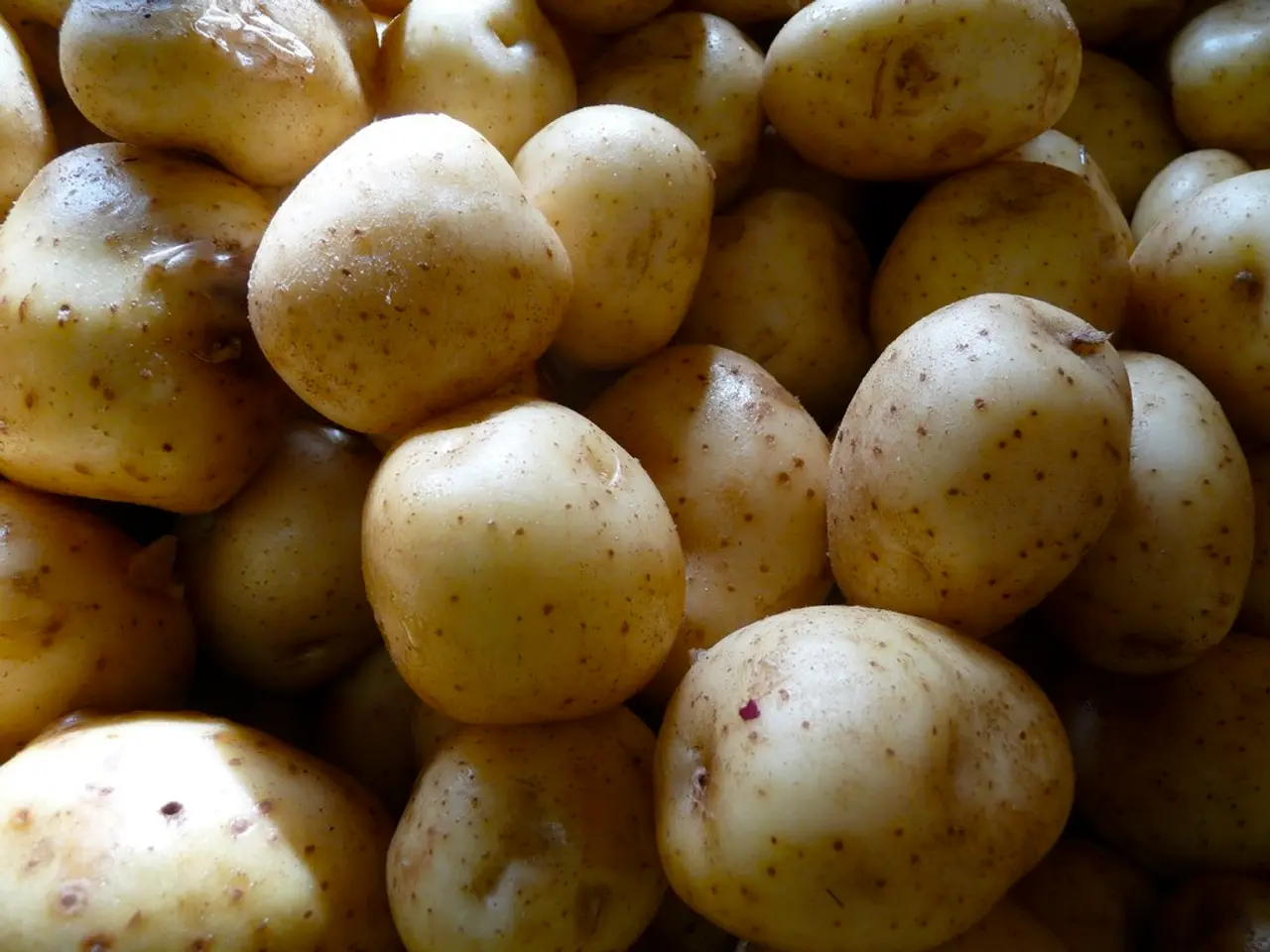Sprouts emerging from potatoes: an explanation.
In the world of gardening, potatoes may not be the first plant that comes to mind when discussing reproduction methods. However, these humble tubers have a fascinating ability to multiply through a process known as asexual reproduction and vegetative propagation, all thanks to the small, dark-coloured bumps that adorn their surface - what we commonly refer to as 'eyes'.
These 'eyes' are actually dormant buds or nodes located on the tuber, which is a swollen underground stem. Each eye contains one or more axillary buds that can sprout to grow new stems and leaves under favourable conditions. When the buds break dormancy and begin to grow shoots, they develop above ground into a new potato plant, while roots grow new tubers underground, effectively propagating the plant.
This unique characteristic allows potatoes to be propagated by planting pieces of tubers that contain eyes. Each eye has the potential to grow into a clone of the parent potato plant, preserving its genetics. This method is widely used commercially to reproduce potato plants.
Intriguingly, potatoes already contain the nutrients and materials needed to grow. The hormones in potatoes control the growth of dormant sprouts. These hormones can reduce their concentrations in any environment similar to the soil where potatoes grow naturally, triggering the sprouting process.
Potatoes can sprout in a variety of conditions. They thrive in warm, well-drained, sandy loam soil, similar to their origins in the Andes mountains. However, they can also sprout in any well-ventilated, dry, and dark conditions, such as a kitchen pantry.
In summary, the eyes on potatoes are specialized structures that serve as growth points for new shoots, enabling asexual reproduction and vegetative propagation of the potato plant. This remarkable trait not only aids in the commercial production of potatoes but also offers a fascinating insight into the intricate world of plant biology.
The dormant buds or nodes, known as 'eyes', on potatoes not only aid in their asexual reproduction and vegetative propagation but also contain the nutrients and materials needed for sprouting, offering an interesting connection between the field of science, specifically horticulture, and health-and-wellness, particularly nutrition.
Understanding the growth process of potatoes can provide valuable insights for health-conscious individuals, as the hormones that control the growth of dormant sprouts in potatoes may hold potential for improving human health, especially in the realm of health-and-wellness and nutrition.




